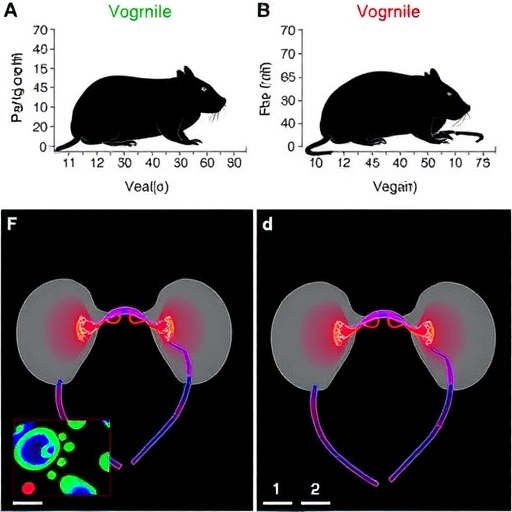Every year, more than 300,000 women worldwide receive the devastating diagnosis of ovarian cancer, a disease notorious for its complexity and tendency to present at advanced stages. The fight against ovarian cancer is arduous, often hindered by the challenges of tailoring effective therapies to the unique molecular landscapes of individual tumors. Now, a groundbreaking clinical trial conducted across 15 Australian hospitals offers promising new insights that could revolutionize treatment personalization and improve outcomes for these patients.
The four-year randomized Phase II clinical trial, named SOLACE2, brought together leading institutions including the University of Sydney NHMRC Clinical Trials Centre, RMIT University, and the Walter and Eliza Hall Institute of Medical Research (WEHI). Coordinated by the Australia New Zealand Gynaecological Oncology Group (ANZGOG), this ambitious study set out to explore advanced strategies aimed at priming the immune system to bolster the efficacy of PARP inhibitor therapy in women with platinum-sensitive ovarian cancer. PARP inhibitors work by blocking the PARP enzyme, crucial for repairing DNA damage in cancer cells, thus rendering them unable to maintain their genomic integrity.
While PARP inhibitor therapy is currently prescribed primarily to patients with homologous recombination deficiency (HRD-positive tumors), marked by defective DNA repair mechanisms, clinical experience has shown contradictory outcomes. Some women with HRD-negative tumors still respond to PARP inhibitors, while others with HRD-positive ovarian cancer do not, highlighting the inadequacy of current biomarkers to fully predict therapeutic responsiveness. This discrepancy has driven researchers to seek more nuanced, dynamic predictive tools beyond genomic tests.
In this context, RMIT’s Distinguished Professor Magdalena Plebanski, co-senior author and lead researcher, emphasizes the novelty of a new immune-based blood test developed and evaluated during the SOLACE2 trial. Unlike traditional HRD testing that relies on static genetic information from tumor biopsies, this test offers real-time insight into the patient’s immune system response. It measures a composite “biomarker signature” that combines levels of immune activation markers indicating the mobilization of cytotoxic immune cells toward tumor sites, alongside indicators of inflammatory pathways that may hinder treatment success and fuel cancer progression.
Published in Nature Communications, the research unveils how these RMIT-patented immune biomarkers outperform the current HRD test’s predictive capacity. This advancement has far-reaching implications because the standard HRD assay depends on viable tumor tissue samples and involves complex DNA repair analyses, which are not always feasible or representative of the cancer’s evolving biology. Tumor DNA repair proficiency can fluctuate over time, especially under treatment pressure, potentially misleading clinicians relying solely on static tests.
Professor Plebanski elucidates that their immune-focused approach better captures the dynamic interplay between immune surveillance and tumor biology. By tracking effector T cell activation and migration in the bloodstream, the test offers a directly relevant indication of how the patient’s body is naturally combating the cancer at any given moment. This real-time biomarker assessment can thus refine patient selection for PARP inhibitor therapy, ensuring more women who stand to benefit receive this potent therapeutic modality, while sparing others from ineffective treatments and associated toxicities.
A critical dimension of the SOLACE2 findings came from the expertise of WEHI’s Professor Clare Scott AM, joint-senior author, and an oncologist deeply versed in ovarian cancers. Scott highlights the integral role played by immune cell trafficking into the tumor microenvironment. Their capacity to infiltrate tumors and mediate cytolytic activity against cancer cells emerges as a decisive factor in response to PARP inhibitors, especially when combined with immunotherapy agents. Understanding and eventually manipulating this immune migration holds promise not just for prognosis but also for developing adjunct treatments that potentiate immune-mediated tumor control.
Despite these promising results, the novel blood test is not yet available in routine clinical practice. It requires further validation through larger, multi-center studies and regulatory approval before becoming an accessible tool for oncologists worldwide. Nonetheless, the SOLACE2 trial’s results underscore a paradigm shift towards integrating immune function assays into personalized cancer treatment algorithms, which could herald a new era in ovarian cancer care.
The SOLACE2 clinical trial also assessed the therapeutic benefit of immune priming with a combination of olaparib, durvalumab, and low-dose cyclophosphamide. Clinical lead Professor Chee Khoon Lee from the University of Sydney’s NHMRC Clinical Trials Centre notes that although the trial exhibited encouraging signs of delaying cancer recurrence with this three-month immune priming approach followed by PARP inhibitor and immunotherapy, the sample size precluded definitive conclusions. More extensive research will be essential to confirm these clinical benefits.
Nonetheless, the study achieved a crucial breakthrough by simultaneously unveiling a prognostic blood signature predictive of therapy response. This signature has the transformative potential to guide clinicians in tailoring treatments with unprecedented precision, transcending the limitations imposed by genomic biomarkers alone. Effectively, patients could be stratified based on dynamic immune responsiveness, enabling more accurate and personalized ovarian cancer management.
The trial’s findings emphasize the complex and evolving nature of ovarian cancer biology, underscoring the inadequacy of relying solely on DNA repair status as a predictive marker. By shifting the focus to immunological indicators detectable through a simple blood test, the research team envisions a future where treatment decisions incorporate real-time biological data from the host immune environment, leading to more nuanced and effective therapeutic regimens.
This study marks a watershed moment in ovarian cancer research, unveiling a robust path forward for integrating immunological insights into clinical oncology practice. The researchers’ multidisciplinary approach—uniting clinical trials, immunology, molecular biology, and patient-centered methodology—sets a new standard for precision oncology aimed at improving survival and quality of life for women facing this formidable disease.
The SOLACE2 results, detailed in the publication titled “Olaparib, durvalumab, and cyclophosphamide, and a prognostic blood signature in platinum-sensitive ovarian cancer: the randomized phase 2 SOLACE2 trial,” represent a beacon of hope for ovarian cancer patients and clinicians alike. Continued research and validation will be critical to translate these scientific advances into routine clinical use, ultimately transforming ovarian cancer treatment paradigms and patient outcomes globally.
Subject of Research: People
Article Title: Olaparib, durvalumab, and cyclophosphamide, and a prognostic blood signature in platinum-sensitive ovarian cancer: the randomized phase 2 SOLACE2 trial
News Publication Date: 5-Nov-2025
Web References:
https://www.nature.com/articles/s41467-025-64130-6
http://dx.doi.org/10.1038/s41467-025-64130-6
References:
Olaparib, durvalumab, and cyclophosphamide, and a prognostic blood signature in platinum-sensitive ovarian cancer: the randomized phase 2 SOLACE2 trial, Nature Communications, DOI: 10.1038/s41467-025-64130-6
Image Credits: WEHI
Keywords: Cancer, Ovarian cancer, Clinical medicine, Biomarkers, Medical diagnosis
Tags: Australian gynaecological oncology researchchallenges in ovarian cancer managementclinical trials for ovarian cancereffective therapies for women with ovarian cancerimmune system enhancement in cancer therapyimproving patient outcomes in cancer treatmentmolecular profiling of tumorsovarian cancer treatment advancementsPARP inhibitors and DNA repairpersonalized medicine in oncologyplatinum-sensitive ovarian cancer therapiesSOLACE2 clinical trial findings





